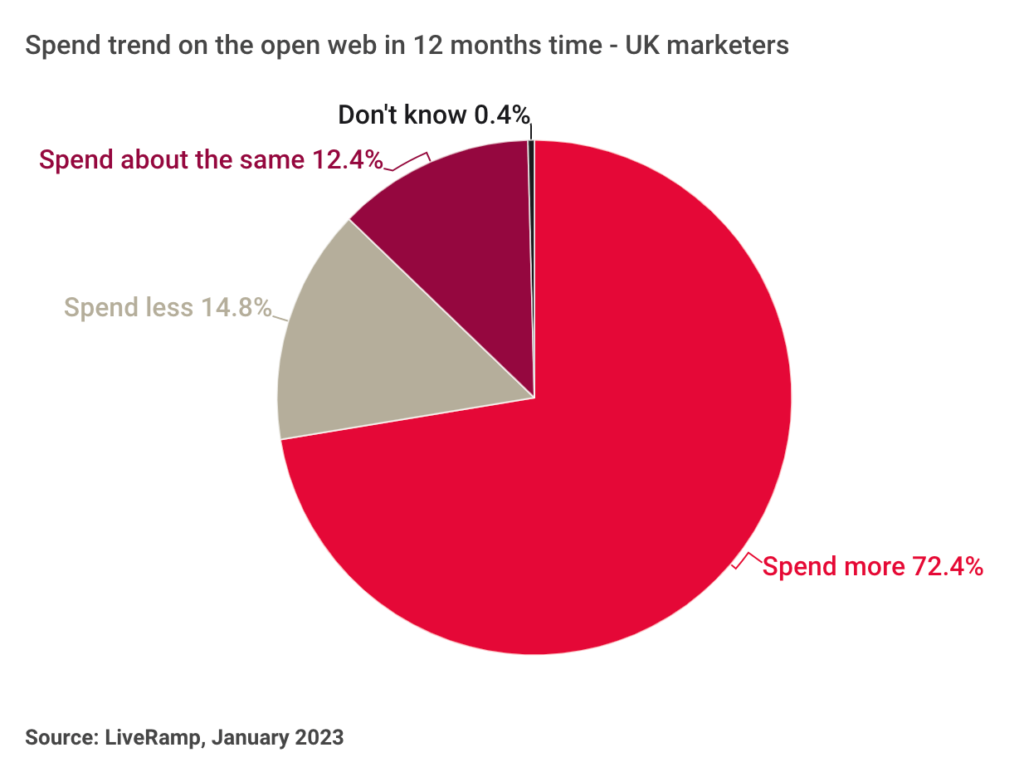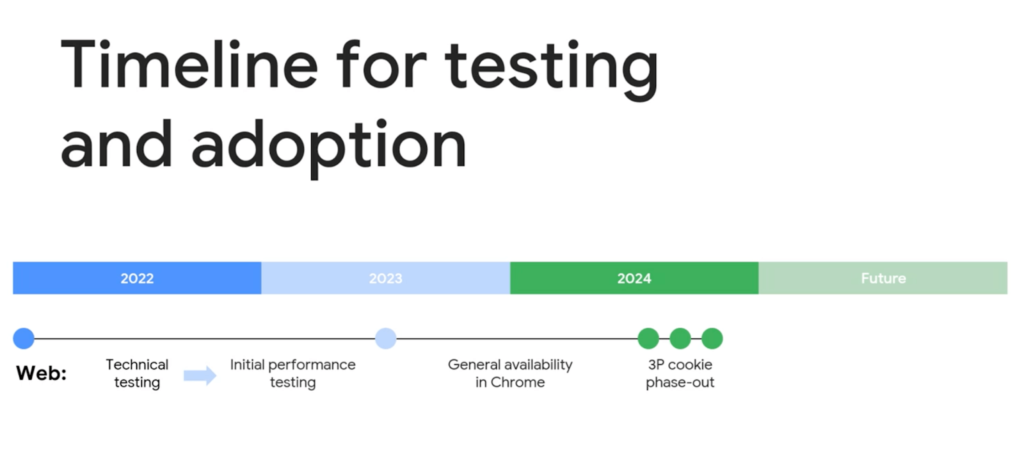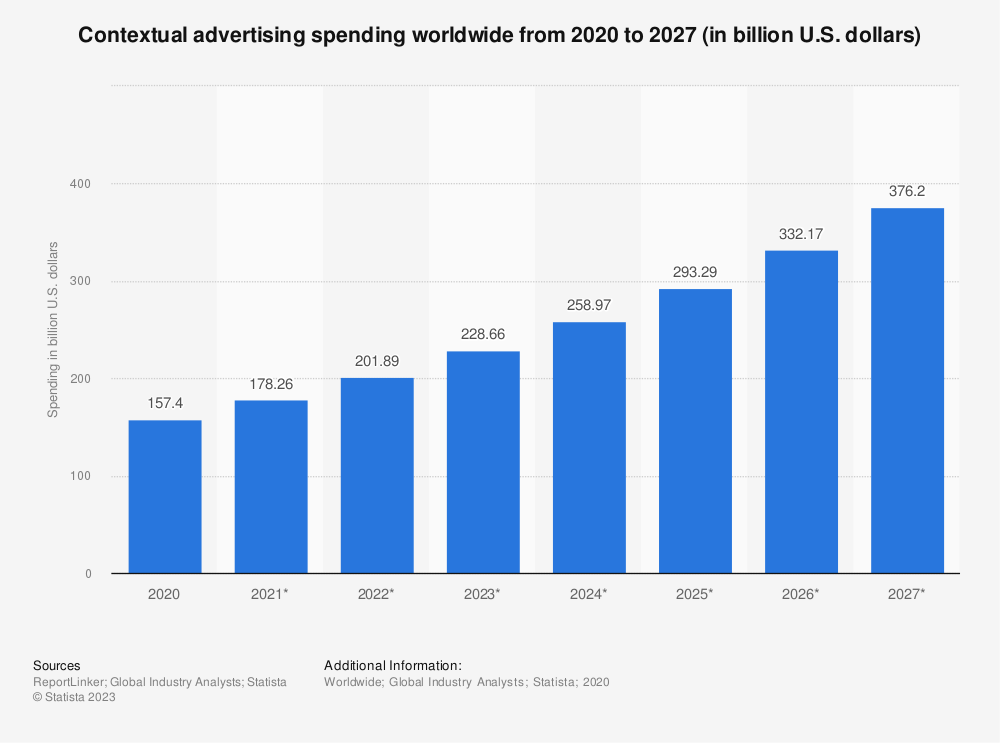Open Web vs Walled Gardens: A Marketing Expert Round-Up
As the demise of third-party cookies approaches and the open web battles walled gardens, the question a lot of publishers may be asking is how their monetization strategy will be impacted. Will advertisers retreat to the secure environment of walled gardens, or will technological advancements benefit the Open Web?
Introduction
The upcoming demise of third-party cookies is bringing a lot of changes to the digital advertising and publishing industry. With advertisers and publishers looking for new ways to identify their users across different platforms, we asked 11 industry experts about what are their thoughts about the data collection best practices moving forward.
What is Open Web?
In simple terms, open web is any online property, like website or app, that is not owned by a major technology company like Meta, Amazon, and Google. Examples of the open web include BuzzFeed, CNBC, CNN, and others.
Overall, the open web symbolizes unrestricted and decentralized internet, where users have the freedom to access and contribute to a diverse range of content and services.
What is Walled Garden?
A walled garden refers to a closed ecosystem or platform that is controlled by a single entity, typically a company or organization. In this setup, the entity tightly controls the user’s access to content, data and services within the ecosystem. An example of a walled garden is Apple or Meta.
In this manner, walled gardens can ensure a consistent user experience and generate revenue through various means such as app sales, subscriptions, or advertising.
Walled gardens also have a distinct advantage when it comes to first-party data. Since walled gardens operate within closed ecosystems, they have access to first-party user data within their platforms. This enables them to collect more comprehensive and detailed first-party data compared to individual websites on the open web.
Industry Expert Opinions
1. “With the right tools and preparation, companies can avoid being left behind.”

“As third-party cookies disappear from the web, it is clear that both publishers and advertisers need to find new ways to identify their users across different platforms. In order to do this effectively, data clean rooms are becoming essential tools for many companies. Clean rooms are designed to allow data analysts to share anonymized user information between different parties while ensuring privacy compliance laws are adhered to.
The cookie-free future may bring changes for the open web as well as walled gardens like Facebook or Google Ads. While there may not be an immediate impact on walled gardens since they control most of their own data already, the open web will certainly feel the effect more keenly due solely to relying on third-party cookies previously. To best prepare themselves, open web players should focus on investing in identity solutions, such as data clean rooms, to ensure their audience remains identifiable and their advertising efforts remain effective.” – Tomasz Niezgoda, Head of Marketing and Co-Founder at Surfer
2. “Overall, the removal of third-party cookies will likely lead to a more privacy-compliant and user-centric web, but it will also present challenges for the advertising and publishing industry.”

“One potential solution for advertisers and publishers is to use first-party data and on-device identifiers. This involves collecting data directly from users through their interactions with a publisher’s website or app and using that data to create user profiles and target advertising.
However, this approach has limitations, as it relies on users being willing to share their data, and it may not be as effective as third-party cookies in terms of tracking users across the web.” – Chinmay Daflapurkar, Digital Marketing Associate at Arista Systems
3. “Walled gardens are rising, but the real marketing potential is in the open web.”

“According to the Performance Marketing World study, 9 in 10 marketers believe Google will withdraw third-party cookies by 2024. As a result, 7 in 10 marketers plan to increase spending on the open web.
What are the possible reasons? Walled gardens limit access to metrics and real-time performance information, making them less effective. Despite perfect targeting, they do not give marketers complete control over their campaigns.
On the other hand, the open web offers agility and transparency. Marketers prioritize flexibility over convenient access to data. Gathering data from the open web requires more effort, but it enables marketing specialists to reach specific audiences at lower costs and quickly adjust their strategy if needed. Also, some of the last privacy issues made people skeptical about social media, making the open web more attractive, both for Internet users and marketers.” – Natalia Brzezińska, Marketing & Outreach Manager at PhotoAiD

Source: Performance Marketing World
4. “The effectiveness of ID solutions such as data clean rooms, while important in protecting privacy, may not be enough to replace the tracking capabilities of third-party cookies.”

“Ultimately, the cookie-less future is an opportunity to innovate and create more secure systems that better protect user privacy. We should be excited about what the future can bring in terms of digital advertising and content personalization. The removal of third-party cookies is a necessary move to ensure privacy and identity are protected. This will have a major impact on the advertising/publishing industry, as it will require them to find new ways to track user behavior.
The effectiveness of ID solutions such as data clean rooms, while important in protecting privacy, may not be enough to replace the tracking capabilities of third-party cookies. In the cookie-free future, the open web and walled gardens will need to find ways to track user behavior and interests in order to personalize ads and content. This will likely require companies to invest more heavily in their own identity solutions that can be both privacy-friendly and effective.” – Daniel Charbert, CEO and Founder of PurpleFire
5. “In the next era of privacy management, browsers are likely to be the cornerstone at which users’ privacy preferences and businesses’ advertisement offers will meet.”

“A third-party cookie-free future calls for a redefinition of businesses’ advertising and data management strategies. In the past decades the general public and regulators have been pushing for a greater control of privacy, now putting third party cookies and the cross-context behavioral tracking they serve on the bridge of extinction.
In the next era of privacy management, browsers are likely to be the cornerstone at which users’ privacy preferences and businesses’ advertisement offers will meet. Projects such as Google’s Privacy Sandbox and Global Privacy Control have already started shaping the future of privacy, which looks more transparent and manageable for users. For advertisers and walled gardens, the customer relationship should become the defining factor of their data acquisition strategy.
While they will likely still have access to anonymized third party data through browsers, first party data will provide for more reliable and valuable long-term opportunities. Transparency and a clear data value proposal should make for improved data dialogues between users and advertisers.” – Etienne Cussol, Compliance Analyst at Termly
Google Privacy Sandbox Timeline

6. “The future of the open web and walled gardens without cookies will be vastly different than it is today, and it will be shaped by the ongoing evolution of automated data collection and personalization.”

“In the future, the open web and walled gardens may lean more on secure, automated data collection methods such as browser fingerprinting, device recognition, and probabilistic methods.
These alternative methods provide more privacy protection and better accuracy in terms of providing personalized, targeted experiences for users. It could also shift the focus on user engagement metrics such as average session duration, page views per visitor, and repeat visits to measure the success of marketing campaigns or websites.” – Becca Klein, blogger and digital course creator at BeccaKlein.co
7. “As we transition away from third-party cookies, marketers and advertisers will rely more on automation and machine learning for enhanced contextual targeting.”

“The end of third-party cookies will be beneficial to the marketing and advertising industries. It is going to be a significant change-maker. The issue with third-party cookies is that they are ambiguous, and customers have little to no control over how they are used or what personal data is shared.
In addition, since third-party cookies are device-based rather than person-based, their data may produce poor outcomes. As a result, there may be several duplications or useless ad impressions due to low-quality data. As we transition away from third-party cookies, marketers and advertisers will rely more on automation and machine learning for enhanced contextual targeting.
There will also be advancements in the collection of zero-party data. Expect to see marketers and advertisers embrace gamification and interactive experiences to get zero-party data, as entertainment of any kind is an excellent method for doing so.” – Anton Konopliov, Founder of Redline Digital
8. “Unfortunately, in a cookieless future, websites’ ad data and third-party data processing will deteriorate in extent, availability, quantity, and quality.”

“It will be more challenging to provide the user with pertinent information as the algorithm can no longer be used to efficiently show personalized ads to consumers. Additionally, it will be more difficult to influence a user across multiple websites and to identify comparable target populations to build lookalike audiences to attract new users, increase brand awareness, and deliver tailored advertisements.
The purpose of third-party cookies and other tracking technologies is to store user information anonymously. Ad-tech does, however, provide the chance to run and assess highly targeted advertising due to access to enormous datasets. ID Solutions and Data Clean Rooms provide a fair compromise between maintaining user privacy and enabling businesses to target their market, evaluate the success of their advertising efforts, and link impressions and clicks to conversions.” – Edlyn Collanto, B2B Marketing Research Specialist at UpCity
9. “We should expect to see an exponential rise in contextual advertising over the next few years as third-party cookies gradually cease to exist.”

“[Contextual] advertising is where the ads placed are based on the content and context of the website, rather than on the user’s browser history. Spending on contextual advertising is predicted to double by 2027 to about $376.2 billion globally, thanks to marketers increasingly adopting this effective alternative to third-party cookies.
Contextual targeting shows ads based on the content that the user is viewing, the location, time of day, and even the weather to determine which ads to show each user. The more relevant ads also improve customer loyalty, with some reports indicating that contextual targeting can result in a 33% jump in customer loyalty and retention. Lastly, contextual targeting is less cost intensive than behavioral targeting, making it much cheaper to implement at scale.” – James Wilkinson, the CEO, and co-founder of Balance One

Source: Statista
10. “As the use of third party cookies continues to decline rapidly, more brands will turn to zero-party and first-party data for targeted marketing.”

“At least 90% of brands are expected to increase their collection of zero-party and first-party data by the end of 2024. Brands are expected to leverage both types of data to train their AI systems that will then be able to predict customer behavior more accurately.
These systems will also be able to provide better product recommendations and hyper personalized experiences for website users, resulting in more conversions, and greater marketing ROI for brands. Combining zero and first-party data and using it to train AI systems is expected to increase revenue by at least 20% for most small businesses, many of which have limited but valuable datasets.” – Lisa Richards, CEO and Creator of the Candida Diet
11. “We are exploring ways to utilize alternative user identification solutions such as federated login options (Google and Facebook), device fingerprinting and first-party data to fill the gap created by cookie reliance.”

“In terms of the future of privacy, ID solutions, data clean rooms, etc., I strongly believe that anonymity will become more prevalent in digital marketing initiatives in order for businesses to protect user privacy while still delivering tailored experiences that meet their needs. Data clean rooms can play an important role in this space by enabling companies to securely store and exchange sensitive information without compromising its integrity or accuracy.
Furthermore, personalization should become more nuanced with user preferences taken into account when creating unique experiences that deliver value without compromising their privacy. This means increased emphasis on contextual targeting rather than relying solely on cookie-based tracking techniques which have been found wanting when it comes to personalizing content for users beyond basic segmentation criteria. – Robert Hoffmann, Marketing Manager at CashbackHero
Final Words
Overall, there remains a lot of uncertainty about the future and effectiveness of ID solutions in the cookieless future. Experts seem to agree that the open web will be affected more by this change compared to walled gardens. These changes reflect heavily on publishers who risk being left with a limited view of how each channel or campaign performs for monetization strategy. It becomes even more challenging when you have to leverage multiple ad platforms and sources.
To prepare for the cookie-free future, open web players should invest in identity solutions such as data clean rooms. However, even these solutions may not be enough to replace the tracking capabilities of third-party cookies and companies may have to invest more heavily in their own identity solutions. Browsers are likely to become the cornerstone in the next era of privacy management, where users’ privacy preferences and businesses’ advertisement offers will meet.


